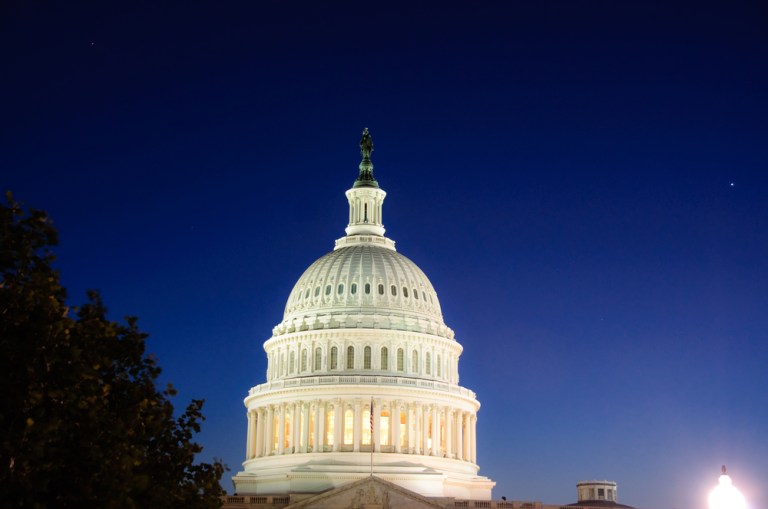
On the regulatory front, last week saw a bit of news about mergers – actually, more than a bit.
Specifically, the agreement for U.S. credit card processing company Vantiv to buy Worldpay, was finalized for $10.4 billion. The combined entity, using annual data at the end of 2016, will be processing at least $1.5 trillion in payment volume across 40 billion transactions spread throughout more than 140 countries. Pro-forma, the merger creates a firm with more than $3.2 billion in annual net revenue.
The merger, of course, spotlights a trend of consolidation within the payments space, and to be sure, in terms of size and scope, the Vantiv deal is one for the record books. But turning the page in that book begs the question about a smaller deal, at $1.2 billion, but with far-reaching implications: Whither the Ant Financial/MoneyGram deal?
As was noted late last month in the New York Post, Republican Rep. Chris Smith (R-N.J.), who serves as co-chairman of the Congressional Executive Committee on China, said that Ant Financial should in fact be blocked from snapping up MoneyGram, chiefly because Ant is 15 percent owned by the Chinese government.
The deal, Smith said as quoted by the Post, would “give the Chinese government significant access to information on financial markets as well as the financial dealings of U.S. citizens” and should be rejected by the Committee on Foreign Investment in the United States (CFIUS). That committee is to make a recommendation to President Donald J. Trump, who would, as the Post recounted, have the final say on the merger, and CFIUS has until late next month to make recommendations on the proposed deal.
Reaching out to PYMNTS on Monday (Aug. 14th), an Ant Financial spokesperson said via e-mail that Ant Financial “is a private company that is not controlled by the Chinese government. A handful of state-owned or affiliate funds (similar to pension funds) have invested in Ant Financial. These non-controlling, passive investors own a de minimis percentage (less than one percent). None of these entities have any participation on Ant Financial’s management or board.”
In an interview with PYMNTS on Friday Aug. 11, one sell-side analyst who asked not to be named, and who has been tracking the proposed merger, said Smith’s comments are “bolder than what you usually” see from elected officials.
CFIUS, he said, may also want to see more evidence of “a degree of commitment” to data privacy, including, for example, data that extends to military personnel both here and abroad. Offering up a hypothetical, the analyst said that there may be data privacy promises in place that cover the first five years of the combined entity’s existence, “But what do you do in year six?”
In a recent interview conducted by PYMNTs’ Karen Webster, with Alex Holmes, CEO of MoneyGram, the executive said that his firm should indeed clear regulatory hurdles since there is no national security threat and the company is also working to complete state licensing requirements.
Separately, Capitol Hill continues to loom large on the regulatory front as far as financial services firms are concerned. The Hill reports that regulators have fined those companies “significantly less” during the dawn of the Trump era than had been seen over the same timeframe last year. That determination comes from analysis from The Wall Street Journal. The regulatory bodies spanning the Securities and Exchange Commission, the Commodity Futures Trading Commission and FINRA have imposed fines that are less than last year by two-thirds, to the tune of $489 million through June of this year.
And in comments that came during a news briefing held at the United Nations and reported on by xinhuanet.com, Jacques Schillaci, who serves as counsel at Linklaters LLP, a multinational law firm, said that legislation tied to Dodd Frank has been a burden to smaller banks across the U.S. The effects have been felt keenly by community banks and regional banks, said the attorney, and expenses have been onerous, even though those smaller outfits did not engage in the same risky lending and trading activities that larger firms embraced.
Outside the U.S., delving into reactions to the Chinese central bank’s plans to regulate FinTech, nationmultimedia.com reported that P2P lenders and larger third-party payment firms are among those players likely to garner more oversight. That move comes as these firms are becoming, as the People’s Bank of China puts it, “systemically important,” and will be included in the banks’ MPA, short for macro-prudential assessment. This is the first time those businesses will be included in that government assessment. The government wants to stop cyclical risks, according to reports. In one interview, Xue Hongyan, director of the Suning Financial Research Institute, said that third-party payment services and P2P lenders may be regulated under MPA.
“The PBOC move … is actually a good sign for the fintech market because regulation indicates recognition of importance, and MPA, a mid- to long-term regulation framework, indicates that short-term risks are well handled,” Xue said. In addition, another source, Ma Juan, credit business manager with Bank of Shanghai, said that there is a “widely held view” that the P2P market’s lending activity is close to that, in size, of more traditional lenders in the country.